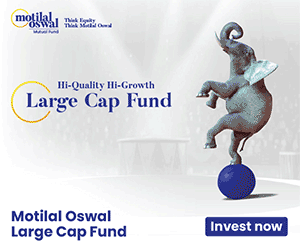Is this a good time to invest in Mutual Fund Debt Schemes

When we think about mutual funds, we are conditioned to think only of equity investments. It is true equity as an asset class provides superior returns over a long time horizon. However equity funds are not the only investment options in mutual funds. For investors with a conservative risk profile and shorter time horizon, debt funds are attractive investment options.
What are debt funds
Debt funds are mutual funds that invest in fixed income securities like treasury bills, government bonds and corporate bonds. Investment options in debt funds include, gilt fund, monthly income plans (MIPs), short term plans (STPs), liquid funds, fixed maturity plans (FMPs), short term bonds, intermediate bonds and long term bonds. Debt funds can be both open ended and close ended. The key benefits of debt funds are:-
- Low Risk: These funds invest in the highest rated papers. Debt funds, themselves, are also rated for credit risk by the rating agencies
- Tax Efficient Returns: Capital gains from debt funds are taxed at 10% without indexation and 20% with indexation. Depending on the time horizon, you may earn tax free returns with indexation
How can we maximize return from a debt funds
To answer this question, we should understand the relationship between interest rates and bond prices, since the underlying portfolio of debt funds comprises bonds. Bond prices have an inverse relationship with interest rates. Therefore as interest rate goes up bond prices decline and vice versa. For sometime now we have been in the grip of high interest rate regime on account of stubbornly high inflation. The market was disappointed when the Reserve Bank of India raised the repo rate by 25 basis points in their January policy meeting. However, according to a Reuter’s survey today, inflation is easing off in January. This will be a welcome signal for the RBI to soften rates in their next policy meeting. If we look at the historical data (see the chart below), current 10 year Government bond yields (at 8.7%) are at the 5 year historical high levels.

Historically, benchmark yield at 9% has been a good entry level for debt fund investors because rates usually soften from the 9% level. The current 10 year G-Sec (benchmark) yield is 8.7%. A lot of market experts are expecting a gradual softening of interest rates in the coming months. In fact, the Reserve Bank Governor said that GDP growth is an important priority for him and he will use monetary policy (read lower interest rates) to help the economy return to high growth. While these are very good signals for investors looking to invest in debt funds, they should be patient and be willing to stay invested for at least 2 to 3 years, since the interest rate softening process is likely to be gradual.
How does one make a choice between different debt funds
There is a large menu of options (in terms of fund objectives and tenures) to choose from. Investors should be very clear about
- Time horizon
- Risk appetite
Investors with very short time horizon should look at liquid funds and FMPs with short tenures. However, funds with short tenures may not generate the capital gains you may be looking for. Longer term investors can look at income funds. Smart investors may also consider a hybrid strategy by investing in liquid funds to capture the prevailing high yields in the interim and then switch to income funds as interest rates fall. However, one should closely track the bond markets when employing this strategy, so that they are not caught wrong footed.
The chart below shows the average annual returns of various debt fund categories. It is important to note that past performance is not a guarantee of future performance in mutual funds. As explained earlier, the net asset value (NAV) of these funds will depend on the yield curve and its shift. You should consult with your financial advisor, which investment option is best suited to you, based on your financial plan.

Queries
-
What is the benefit of mutual fund STP
Aug 29, 2019
-
How much to invest to meet target amount of Rs 2 Crores
Aug 26, 2019
-
Can I achieve my financial goals with my current mutual fund investments
Aug 24, 2019
-
Can you tell me return of various indices
Aug 19, 2019
-
What would be the post tax return on different investments
Aug 18, 2019
-
Which Principal Mutual Fund scheme will be suitable for my retirement corpus
Aug 16, 2019
-
What is the minimum holding period for availing NCD interest
Aug 4, 2019
Top Performing Mutual Funds
Recommended Reading
Fund News
-
RBI Monetary Policy: RBI changes policy stance and lowers rate
Apr 9, 2025 by Axis Mutual Fund
-
Kotak Mahindra Mutual Fund launches Kotak Nifty Top 10 Equal Weight Index Fund
Apr 7, 2025 by Advisorkhoj Team
-
Reciprocal Tariffs: Casting a wider net
Apr 7, 2025 by Axis Mutual Fund
-
Kotak Mahindra Mutual Fund launches Kotak Energy Opportunities Fund
Apr 3, 2025 by Advisorkhoj Team
-
Groww Mutual Fund launches Groww Nifty 500 Momentum 50 ETF FOF
Apr 3, 2025 by Advisorkhoj Team













